
| Omnivorous Tussock Moth (one synonym : Euproctis leucomelas Walker, 1855) LYMANTRIINAE, EREBIDAE, NOCTUOIDEA | (donherbisonevans@yahoo.com) and Stella Crossley |
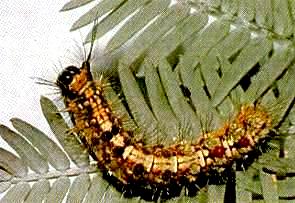
(Photo: courtesy of
Ian Common, from
Moths of Australia)

| Omnivorous Tussock Moth (one synonym : Euproctis leucomelas Walker, 1855) LYMANTRIINAE, EREBIDAE, NOCTUOIDEA | (donherbisonevans@yahoo.com) and Stella Crossley |

(Photo: courtesy of
Ian Common, from
Moths of Australia)
This Caterpillar is basically brown and hairy, with coloured markings, including yellow spots on the thorax, and a dorsal row of pale patches along the abdomen.
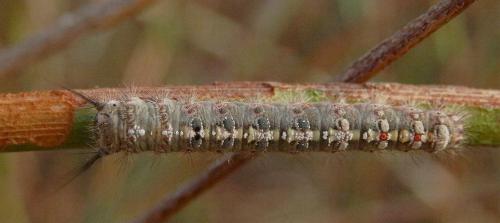
The head has a pair of black hair pencils, like a pair of hairy horns. The caterpillar also has a hairy tail, and a red dorsal gland on each of the two penultimate abdominal segments.

The caterpillar has a broken yellow line along each side, and the underside is green.

The caterpillar is a pest in South Australia on:
On the Lignum: the caterpillar eats the outer bark, stripping the stems.
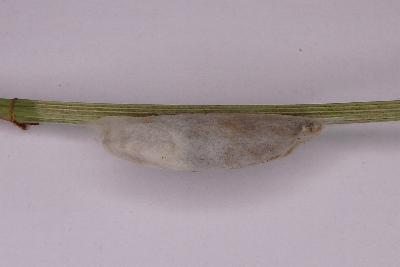
The caterpillar pupates in a doubly-tapered off-white cocoon on a twig.
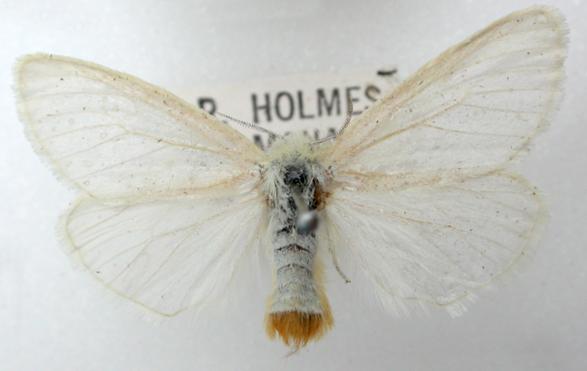
The adult female moth is white, and has an orange tuft on the tail.

The male moths are white, sometimes with a dark mark at the tornus of each forewing, sometimes with a grey mark at the wingtip of each forewing, and sometimes with a broad dark band along the margin of each forewing. Sometimes the hairs around the thorax are yellowish. Sometimes the black skin of the thorax and/or abdomen shows through between the white hairs. The antennae appear to be darker than those of the similar Acyphas chionitis. The moths have a wingspan of about 3 cms. It is possible that the one name is being used for more than one species.
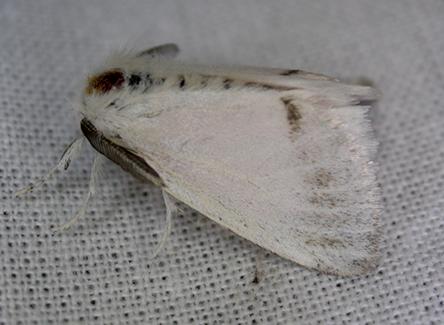
The eggs are laid in a cluster almost anywhere. They are covered by the female with brown hairs from her body.
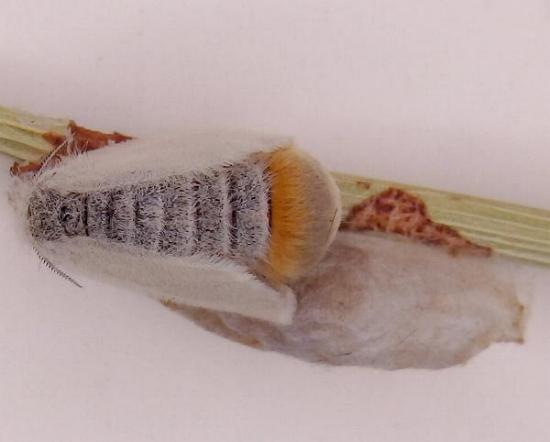
The species occurs across most of Australia, including:
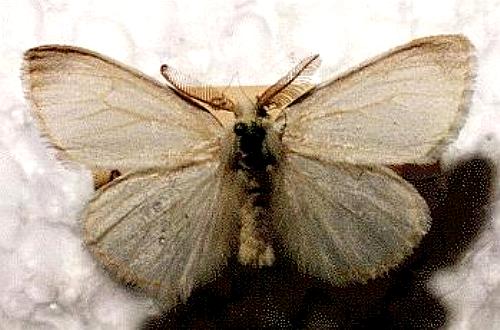
Further reading :
Ian F.B. Common,
Moths of Australia,
Melbourne University Press, 1990, fig. 43.13, pp. 70, 429-430.
Gottlieb August Wilhelm Herrich-Schäffer,
Sammlung neuer oder wenig bekannter aussereuropäischer Schmetterlinge,
Verzeichniss der in diesem Werke gelieferten Arten nach Reihenfolge ihrer Veroffentlichung,
Series I, Volume 1, Part 7 (1855), pp. 18, 70, 82, and also
Plate 68, fig. 390.
Peter B. McQuillan, Jan A. Forrest, David Keane, & Roger Grund,
Caterpillars, moths, and their plants of Southern Australia,
Butterfly Conservation South Australia Inc., Adelaide (2019), p. 151.
Peter Marriott,
Moths of Victoria: Part 2,
Tiger Moths and their Allies - Noctuoidea (A),
Entomological Society of Victoria, 2009, pp. 16-19.
 caterpillar |  butterflies |  Lepidoptera |  moths |  caterpillar |
(updated 11 April 2011, 10 February 2025)